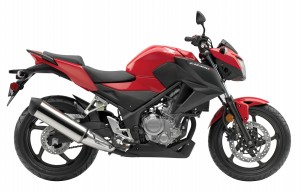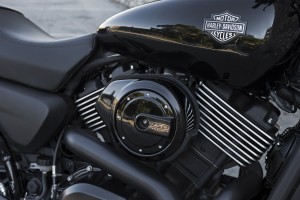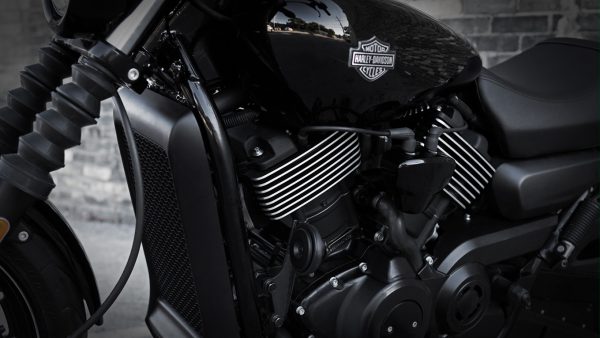In a previous column, I reviewed the various ways that dealers can grow their businesses. One way is by offering more and different products for sale, and  manufacturers are starting to help in this area.
manufacturers are starting to help in this area.
Some forward thinking motorcycle companies have fully accepted the fact that the current riding population is
aging faster than the influx of new riders at the other end of the timeline. Beside the recently troubled economy, this is a key factor in the shrinking sales rate of new motorcycles.
One way to attract to new, younger riders is the introduction of smaller displacement machines that reduce the barriers to entry for new riders.
For discussion’s sake, let’s consider 500cc and below as a good “starter” bike size range. To keep things simple we’ll only look at street bikes. Dual purpose and off-road models would significantly expand our review. Keeping this target in mind, we can look at the current model offerings of the major manufacturers and see how they are reacting to this challenge.
For the most part, it’s the Japanese manufacturers that are addressing this issue head on and are thinking small. Honda has seven distinct models at 500cc and under. This doesn’t even include variations for ABS models, etc. This year’s introduction of the CB300R and CB300F (pictured at right) are clear signs of Honda’s intentions in these markets.
Suzuki has at least three models based on their 250cc twin. Yamaha offers the SR400 single (pictured below at left) and the long-standing V Star 250, and Kawasaki has the Ninja 300.
In all fairness, it’s important to remember that the major markets for the Japanese “Big Four” are outside the United States. So they are making small displacement machines available to markets that are more traditionally oriented towards smaller bikes, like Asia.
 Their decision, however, to bring these bikes into the U.S. market is most likely driven by the desire to attract more entry level riders.
Their decision, however, to bring these bikes into the U.S. market is most likely driven by the desire to attract more entry level riders.
When we turn our attention to the European manufacturers, we see only one model from one company that has even planned a 500cc-or-less bike for the U.S. market in 2015. KTM recently announced that they will be bringing the 390 Duke to our shores. And that’s it for the Euro bike crowd, although there have been spy shots this week of sub-500cc naked BMW.
When you increase the target range to 650cc, BMW has a current offering. From there up to 800cc there are additional models from BMW, Ducati, Triumph, Aprilia, and MV Agusta. But the sub-500cc territory is a lonely one for European supplied bikes.
U.S. manufacturers are also barely in the small displacement game. Polaris’ Victory and Indian brands are still focused on big V-twins. The re-born EBR is still busy introducing their performance oriented big-bore bikes.
Only Harley-Davidson has stepped up with the release of the Street 500. It’s a pretty bold move for the world’s largest producer of big displacement cruisers. The company’s goal is to bring younger riders into the Harley brand. When these new riders gain some experience and confidence on their 500cc Harleys, it’s hoped that they will look to H-D for their move-up decision.
goal is to bring younger riders into the Harley brand. When these new riders gain some experience and confidence on their 500cc Harleys, it’s hoped that they will look to H-D for their move-up decision.
We shouldn’t dismiss one of the oldest brands still in production. Driven by demand for small bikes in their home market of India, Royal Enfield has a host of model variations based on their 500cc single. This year, the Royal Enfield Continental café style bike has added some spice to the range.
We have limited our review to smaller displacement street-only motorcycles. The discussion wouldn’t be complete without acknowledging the significant number of small to mid-displacement scooters that are being sold in the U.S. Even though scooters are a niche market of sorts, it can be argued that some riders move on to motorcycle ownership after having enjoyed their scooters.
What will the future bring?
The manufacturers are in a bit of a chicken-or-egg situation. They can’t develop too much product without the sales to justify the effort. However, they won’t see much sales growth unless they have sufficient product on offer. They’ll probably continue to follow the current path – introduce some new product and try to keep the new model flow moving to stimulate demand.
If the American buyers vote for small displacement bikes with their wallets, then you can count on the manufacturers to expand their offerings. If the market is cool to lukewarm, then we shouldn’t expect to see a whole lot of product development activity. Maybe it’s time for another “You meet the nicest people on a Honda” campaign.
 Ride CT & Ride New England Serving New England, NYC and The Hudson Valley!
Ride CT & Ride New England Serving New England, NYC and The Hudson Valley!



I have to take exception with leaving out off-roadand dual-purpose bikes from this article when there are abundant models under 500cc and that is where most of us learned to ride! Dirt bikes are starter bikes! Sheesh!
Bob – thank you for the great article as I am a motorcycle minimalist and have owned several small displacement machines over the years and enjoy them immensely.
If I could possibly add to the need for lower displacement/more affordable bikes to allow a greater spectrum of riders entry into the market – there is also a very large contingent of vertically challenged riders – many of us women, who are unable to comfortably reach the ground on many of the seat heights currently out there in the Japanese and Euro markets. Some manufacturers are finally heading our calls for adjustable seat options. Harley Davidson has always offered an array of low seat heights. And for the non-cruiser crowd, BMW does a nice job with many seat and suspension offerings but at a premium price. But many other manufacturers, sadly the big four in Japan, are missing the mark, leaving shorter riders to take their dollars elsewhere. As a long time rider with a shorter inseam, I have been patiently waiting for more brands to realize that riders come in all shapes and sizes and despite our small stature, our wallets are stacked and ready to reward those manufacturers that finally will listen to our plea for bikes with reasonable seat heights.
Would love to see one of your upcoming segments address this issue!
Best,
VZ